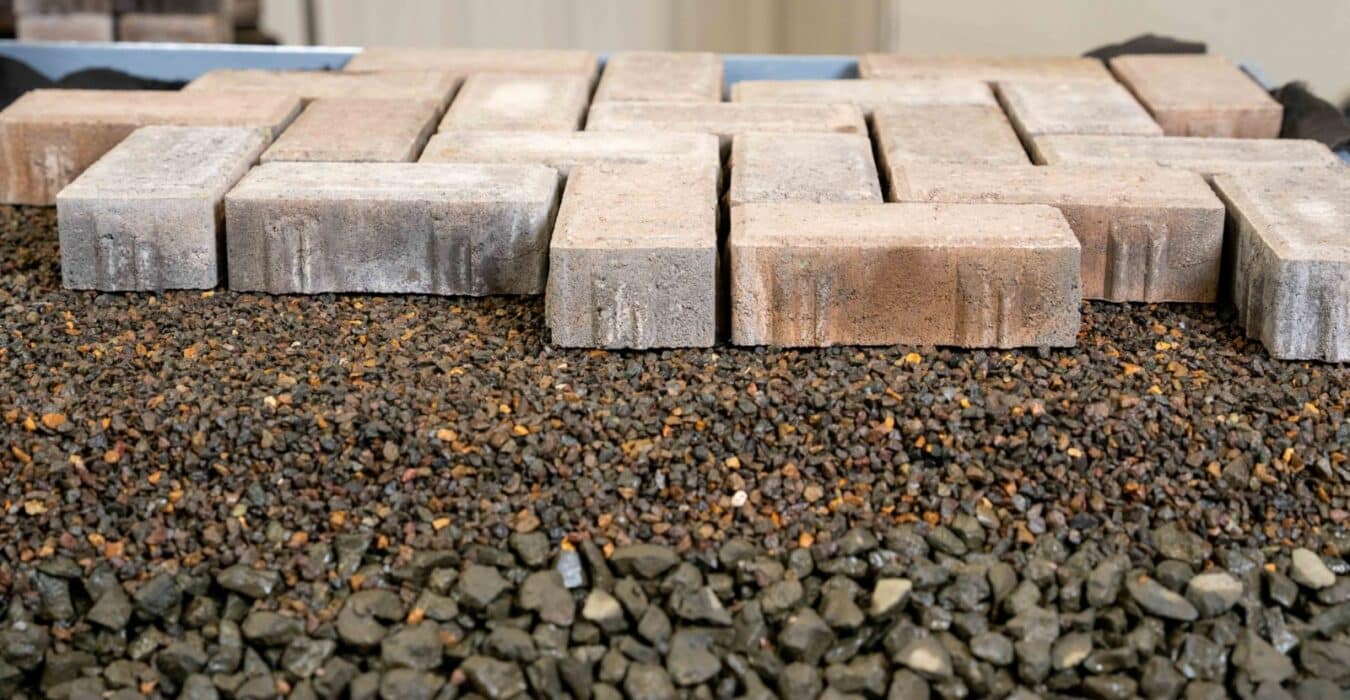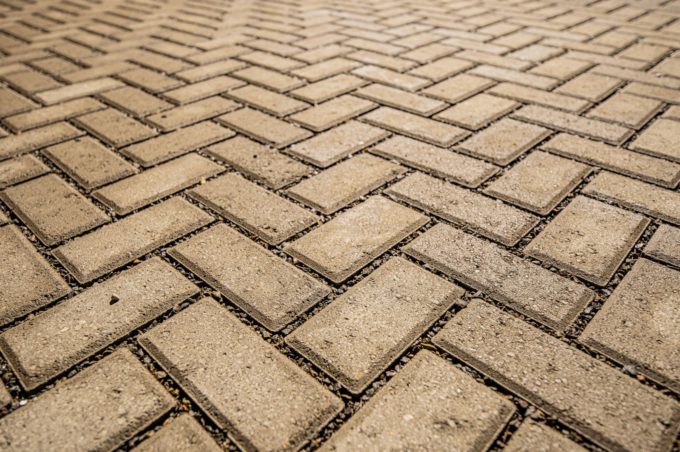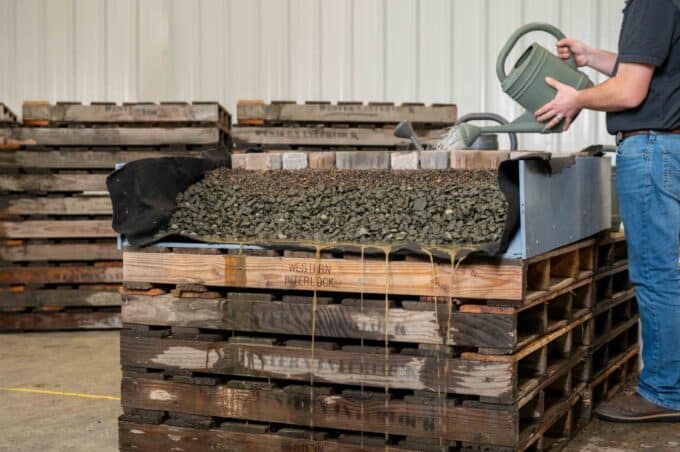When most people think of permeable pavers, they imagine water soaking through the paving stones themselves. But here’s the truth: water doesn’t pass through the stone—it flows through the carefully designed gaps between them. These gaps are created by built-in spacer bars, or lugs, which ensure water has clear paths to drain between the stones. So if you’re asking, “What do you put under permeable pavers?”—you’re asking the most important question, because what’s underneath is the key to making them work.
In this guide, we’ll show you exactly what to install beneath your permeable pavers to help water drain properly and ensure your project stands the test of time.
What Makes a Paver System “Permeable”?
Permeable pavers don’t absorb water. In fact, they’re just as solid as standard pavers. What makes them different is how they’re designed to be installed. Western Interlock’s permeable pavers, like Camino Permeare and Holland Permeare, are made with built-in spacer bars that create extra-wide joints when installed.
These open joints are then filled with a clean, crushed aggregate that allows water to pass easily through to the base below. That’s what makes permeable pavers such a smart solution in areas with heavy rainfall, water restrictions, or strict drainage codes.
To function as intended, the system relies on a properly built base that manages water effectively and supports the structure above.
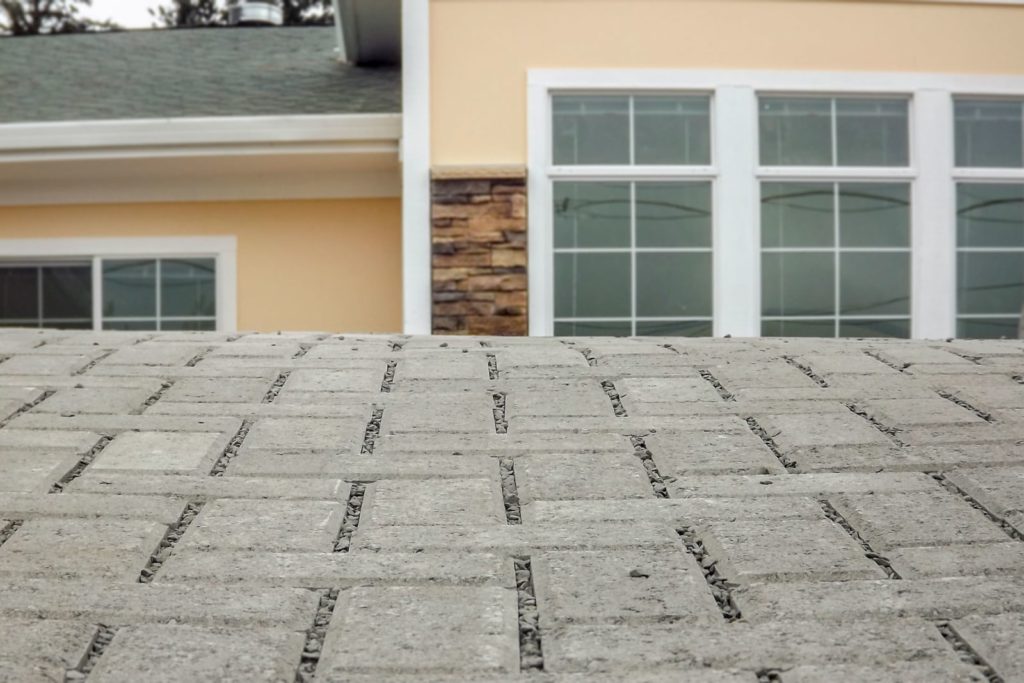
What Do You Put Under Permeable Pavers? – Why the Base Beneath Matters
Permeable paver systems only work when the entire structure—starting from the bottom—is built to allow water through. That’s why you won’t find bedding sand or road base in a proper installation. These materials contain fine particles that can clog the system and block water flow.
Instead, the base is made from open-graded crushed rock—stone that’s carefully screened to exclude fines. This creates larger voids between the rocks, forming a high-capacity drainage system that allows water to move freely through the layers.
Understanding each layer of the base helps ensure your installation performs well and lasts for years to come.
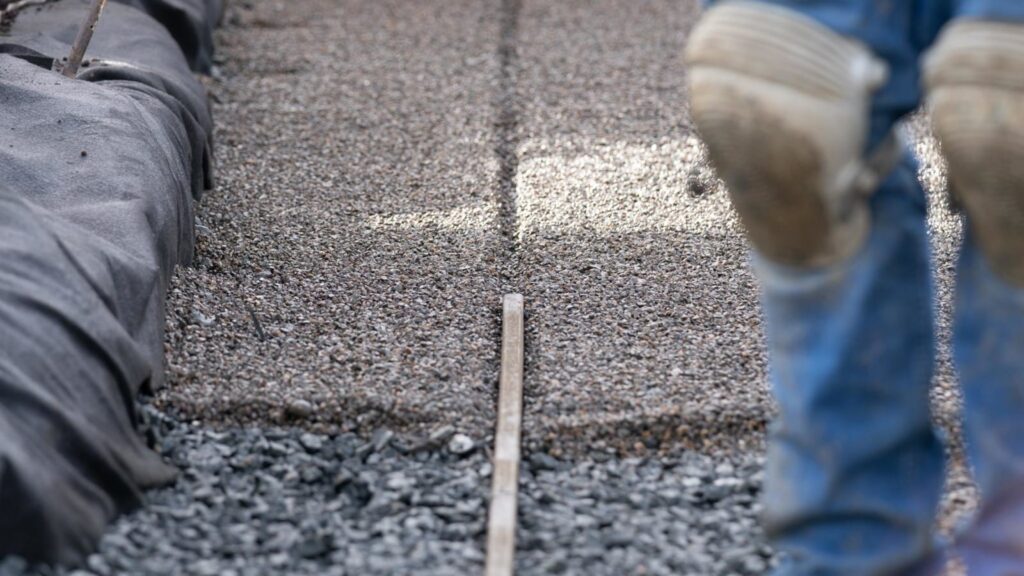
What Do You Put Under Permeable Pavers: The Layers of a Permeable Paver Base
Base construction for permeable pavers isn’t just one layer—it’s a system made up of distinct parts that work together to support weight, promote drainage, and protect against failure over time. Below, we’ll break down each of the key layers that make up a permeable paver base—and how to install them the right way.
1. Geotextile Fabric
Keeps Layers Clean and Separated
Start your excavation with a layer of geotextile fabric to prevent base contamination—especially in areas with softer or clay-heavy soils. Its job is to separate the native soil from the stone base layers, allowing water to pass through while keeping the layers from mixing. This simple step helps preserve drainage performance and structural integrity for the long haul.
2. Sub-Base Layer
Structural Strength and Water Storage
The sub-base is the deepest layer and serves as the structural foundation of the entire system. It’s typically made from 2″–3″ clean, angular stone—often referred to as ASTM #2. This layer provides the largest water storage capacity and is usually installed at a depth of 6″ to 12″, depending on soil conditions and project requirements. It’s installed and compacted in lifts to ensure strength and proper settlement.
3. Base Layer
Load Distribution and Stability
Above the sub-base sits the base layer, made from 3/4″ clean crushed rock (ASTM #57 is a common choice). This layer provides structural strength and distributes weight evenly across the system. It should be installed at a depth of 4–10 inches, depending on your project’s needs, and compacted in 4″ lifts to ensure proper consolidation. Like the sub-base, this layer plays a critical role in creating a stable foundation that supports both traffic and long-term drainage.
4. Bedding Layer
Smooth, Level Support for Pavers
The bedding layer, placed directly beneath the pavers, is where precision really matters. This layer is made from 1/4″-10 clean crushed aggregate. It’s screeded to a uniform depth—typically around 1″—to ensure a smooth, even surface for laying pavers. Unlike a traditional sand setting bed, this layer should not be compacted before placing pavers. Instead, the pavers are compacted into the bedding layer during final installation.
Want to step back and look at the full picture before you begin?
Check out Paver Base Preparation: Step-by-Step Guide and How to Choose the Right Base Method for Your Paver Projects. These resources will help you assess your site, compare base methods, and feel confident before you start digging.
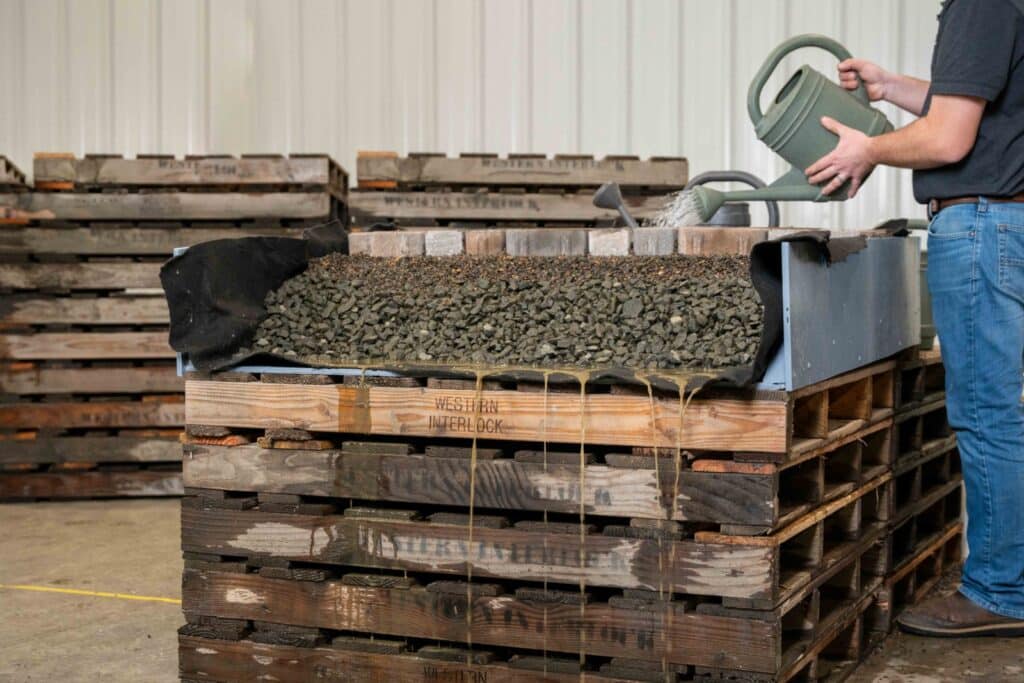
Key Principles for a Successful Permeable Paver Base Installation
Installing a permeable base isn’t more difficult than a traditional one—but it does require careful attention to detail. Here are a few guiding principles to follow as you build:
Use the right materials
Open-graded, angular crushed rock is non-negotiable. Fines, rounded gravel, or sand can clog the system and limit drainage.
Build in layers
Each layer should be compacted individually (except the bedding layer), starting with the sub-base. This ensures a stable foundation that can handle weight and water over time.
Watch your slope
While the system is designed to handle infiltration, a slight slope (1–2%) can still help direct any excess water where you want it to go.
Finish strong with joint fill
Once your pavers are in place, sweep the same 1/4″-10 crushed rock into the joints. This locks everything together while preserving water flow.

You’ve Got This—And We’re Here to Help
If you’re new to permeable paver systems, you’re not alone. At Western Interlock, we’ve helped thousands of homeowners and contractors install beautiful, functional hardscapes that hold up year after year.
Whether you’re planning a new patio, refreshing an aging driveway, or expanding your outdoor living space, Western Interlock offers the support, materials, and know-how to help you every step of the way.
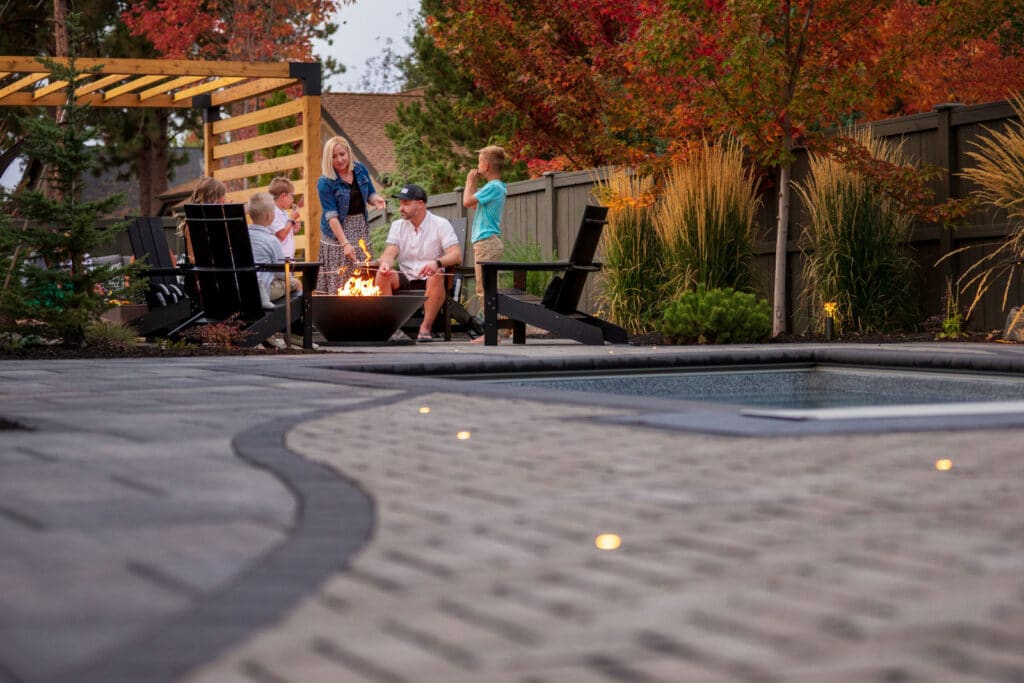
Ready to start your permeable paver project?
Shop our selection of permeable pavers to find the style, color, and format that fits your outdoor space—and pairs perfectly with the performance you just planned for. Now you have all the knowledge you need including what do you put under your permeable pavers.


